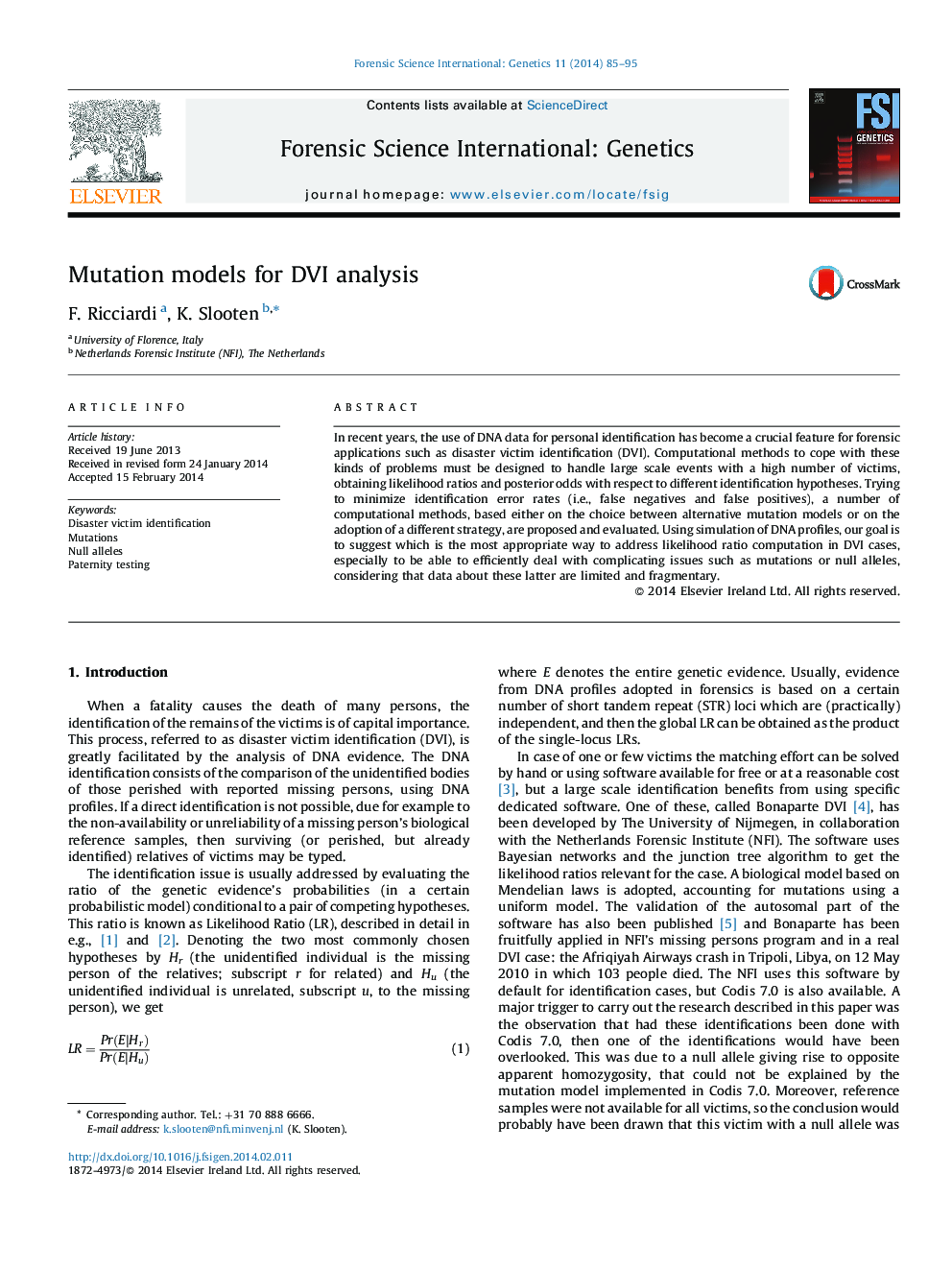| Article ID | Journal | Published Year | Pages | File Type |
|---|---|---|---|---|
| 6554078 | Forensic Science International: Genetics | 2014 | 11 Pages |
Abstract
In recent years, the use of DNA data for personal identification has become a crucial feature for forensic applications such as disaster victim identification (DVI). Computational methods to cope with these kinds of problems must be designed to handle large scale events with a high number of victims, obtaining likelihood ratios and posterior odds with respect to different identification hypotheses. Trying to minimize identification error rates (i.e., false negatives and false positives), a number of computational methods, based either on the choice between alternative mutation models or on the adoption of a different strategy, are proposed and evaluated. Using simulation of DNA profiles, our goal is to suggest which is the most appropriate way to address likelihood ratio computation in DVI cases, especially to be able to efficiently deal with complicating issues such as mutations or null alleles, considering that data about these latter are limited and fragmentary.
Related Topics
Life Sciences
Biochemistry, Genetics and Molecular Biology
Genetics
Authors
F. Ricciardi, K. Slooten,
